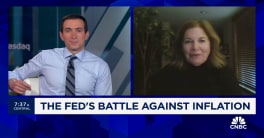Yesterday the commentary mentioned a rumored shut down of MGIC's Capital Markets Group. I received this e-mail: "MGIC has indeed reorganized certain, but not all, activities that were previously performed by our Capital Markets group. We did so to better align the services it provides with our needs of our customers and to operate more efficiently in the current business environment. So the services are not being eliminated, rather our customers' capital markets needs will continue to be supported by their local MGIC Account Managers, with assistance from MGIC's Marketing Department. Unfortunately, as a result of this realignment one individual will no longer be employed by MGIC." The industry is glad to hear that the services MGIC provides are still available, and that its customers' capital markets needs will continue to be supported by their local MGIC Account Managers.
Lenders out there, especially those with somewhat tight warehouse lines, are very aware that Monday is a holiday, and that next Friday is the last day of the month. They are also aware that rates have gone up, and there will be a push by production divisions to close loans rather than extend. (Are we having fun yet?) Lending is a numbers game, and the MBA isn't the only one out there slicing and dicing data to tell members of the lending herd what the herd is doing. The percentage of loans originated for purchasing homes increased again in April, the third consecutive month they have done so, according Ellie Mae's Origination Insight Report. Purchase loans made up 42 percent of the total originations during the month compared to 38 percent in March and 27 percent in January. It was the largest market share since July 2012 when purchase mortgages also made up 42 percent of the total. FHA loans made up 22 percent of originations and conventional loans 68 percent. Fifteen-year mortgages made up 15% of all mortgages and adjustable rate mortgages had a 3% share, the highest since last July. Ellie Mae's report draws its data from the originations that are handled by its mortgage management software and network, more than 20% of the U.S. total, versus the MBA's 75% of retail production.
Applications, per the MBA's poll, fell by almost 10% last week, echoing what lock desks everywhere were saying. Watch for more talk about either reducing margins or examining originator compensation levels if volumes continue to slide.
Of course the industry is producing the best documented, cleanest, best appraised loans in history. (Just ask any underwriter who audits their 2-3 files a day containing an average of 250 documents.) I received this note focusing on previously produced loans: "Rob, does all this chatter about the big banks adhering to the foreclosure settlement, or not, really matter? And does it really delay the inevitable? I mean, the vast majority of these people aren't making their payments."
You are alluding to the article in the American Banker noting that Wells and Citi had meaningfully slowed foreclosure activity following the release of new guidance from the OCC on minimum standards relating to foreclosure sales. From what I have heard, while this could temporarily decrease short-term supply, the impact should be manageable and have little, if any, impact on the long term numbers. I have heard the same thing - that few people, if anyone, are being foreclosed upon who are actually making their payments. I think that every Realtor and lender has stories of people they know who stayed in houses for months and years without making their payments - is that fair to the rest of us? And yes, investors are still anxious to pick up bargains and make good returns from buying these houses on the courthouse steps.
So while a slowdown in foreclosure activity could temporarily decrease supply in the short term as banks review guidelines to ensure compliance, Bank of America's continuing to foreclose suggests it is already in compliance. This suggests that the larger banks probably do not have to make major changes and that the slowed activity may reflect an abundance of caution, per KBW. "The article indicated J.P. Morgan temporarily halted foreclosure sales but has resumed and that Wells Fargo expects the delay will be brief" so few expect this hiccup to disrupt the REO supply eventually coming through the pipeline. But if you want to read the latest, check out: http://www.latimes.com/business/la-fi-mortgage-settlement-20130522,0,7153925.story.
Yes, rules and regulations are driving lending (and foreclosure) processes and decisions, and with good reason. Online publication Mortgage Professional America notes that, "Originators are being urged to join correspondent lending networks as a possible way to skirt the 3% points and fees cap under the Dodd-Frank Act. Craig Dodds, national sales manager of Amerisave Mortgage Corporation said one way mortgage brokers can avoid the regulation - set to take effect in 2014 - is to join a correspondent lending network." MPA notes that, "Dodds said by becoming a correspondent, loan originators adhere to less stringent disclosures and bypass the 3% requirement because it is their sponsor who underwrites the loans and ultimately pays them. Rather than watching maxes on fees and points, the profit made by an individual loan officer will be determined by his compensation agreement with his company, Dodds said. Originators that have correspondent relationships will have the added opportunity to earn additional revenue through the sale of the closed loan into the secondary market."
Wow, doesn't this quote send shivers down every lender's spine: "As a North Carolina congressman, Mel Watt has tried to arm struggling homeowners with a legal 'sledgehammer' against lenders and expand the ranks of people eligible to cut their mortgage principal." Here is the latest on the confirmation hearings.
Let's have some tidbits of agency & investor news!
Following up on its recent Administrative Notice, the USDA has clarified that the content of "Debt Ratio Waivers and Compensating Factors" applies only to purchase transaction and that refinances are exempt.
Recently Citi announced it is restricting condo projects in Florida that are reviewed using either the Limited Project Review or CPM Expedited review to LTVs/CLTVs/HCLTVs of 75% for primary residences and 70% for second homes. As a reminder, condo project investment properties are not eligible, and new and newly converted Florida condo projects are only eligible for FNMA PERS project review.
On May 10th, PHH retired its 30-year Fixed Interest Only Conforming and 40-year Fixed P&I Conforming products.
PHH has clarified its guidance for large deposits such that any deposit source that is explicitly disclosed on an account statement (direct deposits from employers, the Social Security Administration, the IRS, state income tax refunds, etc.) will not require further explanation or documentation except in cases where the underwriter believes the funds may have been borrowed. Loans that received an Approve response from DU, a large deposit is to be considered any single deposit that exceeds 25% of the gross monthly qualifying income or a series of atypical or inconsistent deposits within a banking cycle that exceed 25% of the gross monthly qualifying income.
For FHA and VA transactions, PHH has issued clarification on the information required for a verbal verification of employment. All current employment apart from active military service must be documented in the loan file, which should include the date the verification was completed; the name, date, title, and phone number of the person with whom employment was verified; the source of the employer's phone number used for verification; dates of the borrower's employment; whether the borrower is on leave or actively employed; and the name and title of the person who confirmed the employment. Employer info for hourly, salary, and commission income must be independently verified via a phone book, the internet, directory assistance, or a licensing bureau, and a screenshot must be included in the loan file. Self-employed borrowers will need to have the existence of their business verified through a third party (i.e. a CPA, regulatory agency, or a licensing bureau) and a screenshot of the business's listing via a phone book, the internet, or directory assistance.
Mortgages had a nice rebound yesterday, and we'll see some of that on rate sheets today. Early yesterday, while skirting storms on the way to Kansas, I received this note from Bill Bodner (Vantage Production/Mortgage Market Guide): "People ask us all the time when will the selloff in MBS end as mortgage bonds have declined nearly 300bp since the 1st of May. This is where the charts can become very important. Bonds have rebounded sharply higher after hitting smack on important, long-term support at the $102.09 area for the 3% coupon. Charting shows that this support dates back to last summer. At the same time, the 10-yr yield hit the psychological 2% level and retreated lower. With little news for the remainder of this holiday week and no additional Treasury supply coming to the market, I think bonds move higher from here giving us all some better pricing in days/weeks ahead. Longer term, if and when bonds fall below this support level, it will be the signal that rates will be in a more sustained move higher. I don't think we are there yet." Thanks Bill!
Indeed yesterday during the day we saw bbetter buying on increased confidence that the QE purchases will continue. Still, no one disagrees that rates are being held artificially low - it is just a matter of time until things start to leak. Tuesday bond markets rallied on "dovish" outlooks from St. Louis Fed President Bullard and New York's Dudley on asset purchases. Their remarks appeared supportive for the current pace to be maintained with Dudley suggesting the Fed should update its exit strategy, while neither discussed the prospect of tapering. Their comments followed Chicago's Evans yesterday who also mentioned the fact that the Fed's exit strategy described in the June 2011 minutes should be revised in light of the fact that Fed's balance sheet is substantially larger and of a different composition now versus then. The 10-yr.'s yield only moved from 1.96% to 1.94% (+.250 in price), but prices on 30-year FNMA 2.5s through 3.5s improved by .5 to .250.
Today's news could be the highlight of the week with Chairman Bernanke testifying on the Economic Outlook before the Joint Economic Committee at 10AM EDT and at 2PM EDT (11AM PST) the Fed releases minutes from the April 20-May 1 FOMC meeting. If investors are further assuaged by what comes out between Bernanke's testimony and the minutes, MBS would seem to have room to "tighten" more, e.g., improve relative to Treasury prices. We'll also have April Existing Home Sales (4.99 million expected versus 4.92 million previously) out at 11AM MST. Early on the 10-yr is down to 1.93% and MBS prices have also improved a shade.







